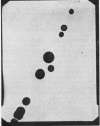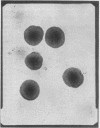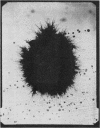Abstract
A method for the clinical isolation and recognition of Corynebacterium vaginale (Haemophilus vaginalis) is presented. Wet mount and stained characteristics of genital tract discharges, cellular and colonial morphology of the bacilli, inhibition by H2O2, lack of a catalase, and fermentation of particular carbohydrates are the determinant factors. The method enables differentiation of the species from unclassified diphtheroids common to the genitourinary tract.
Full text
PDF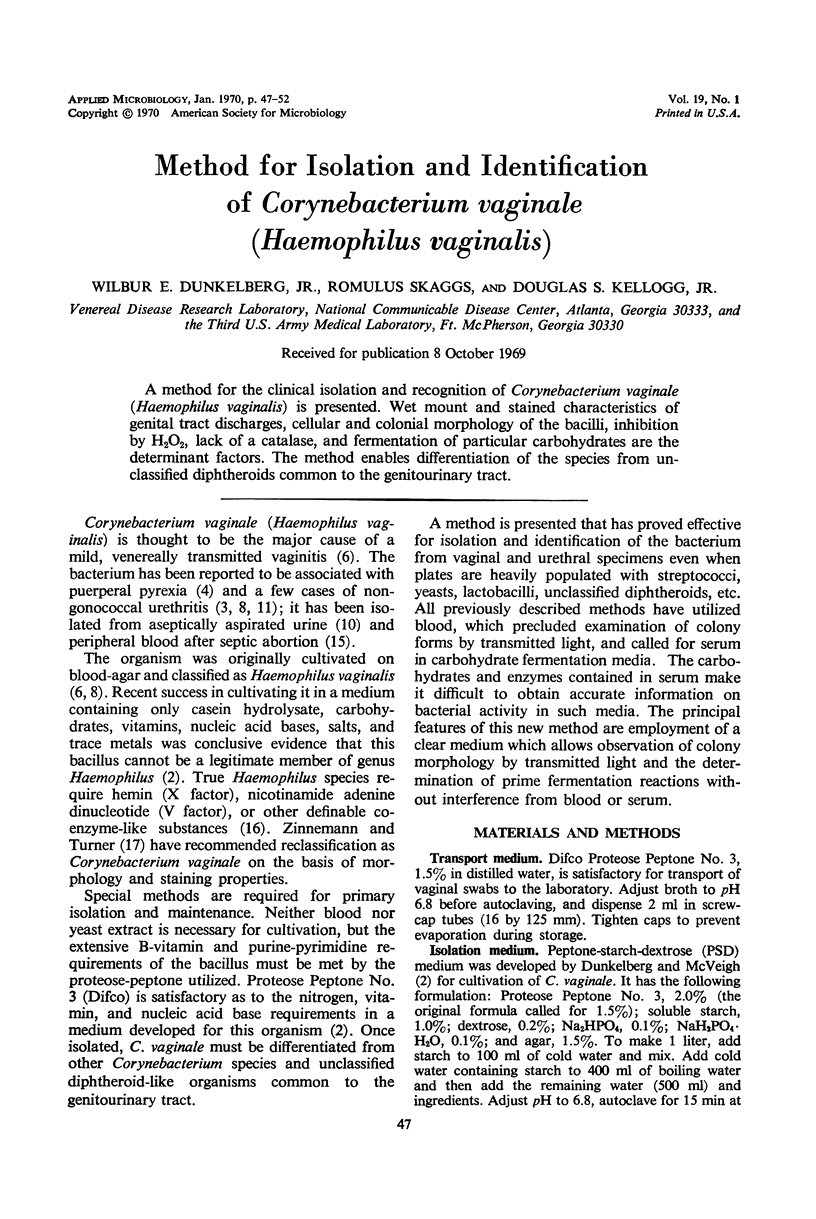
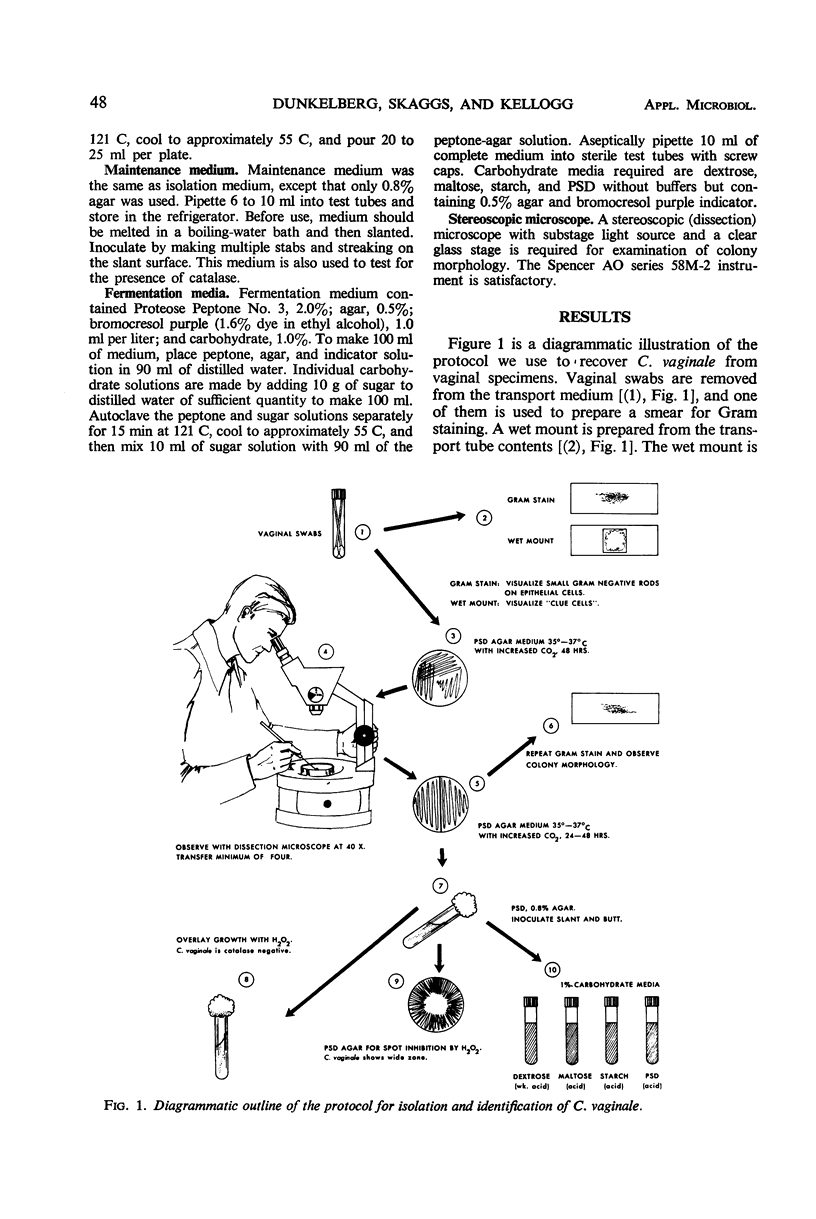
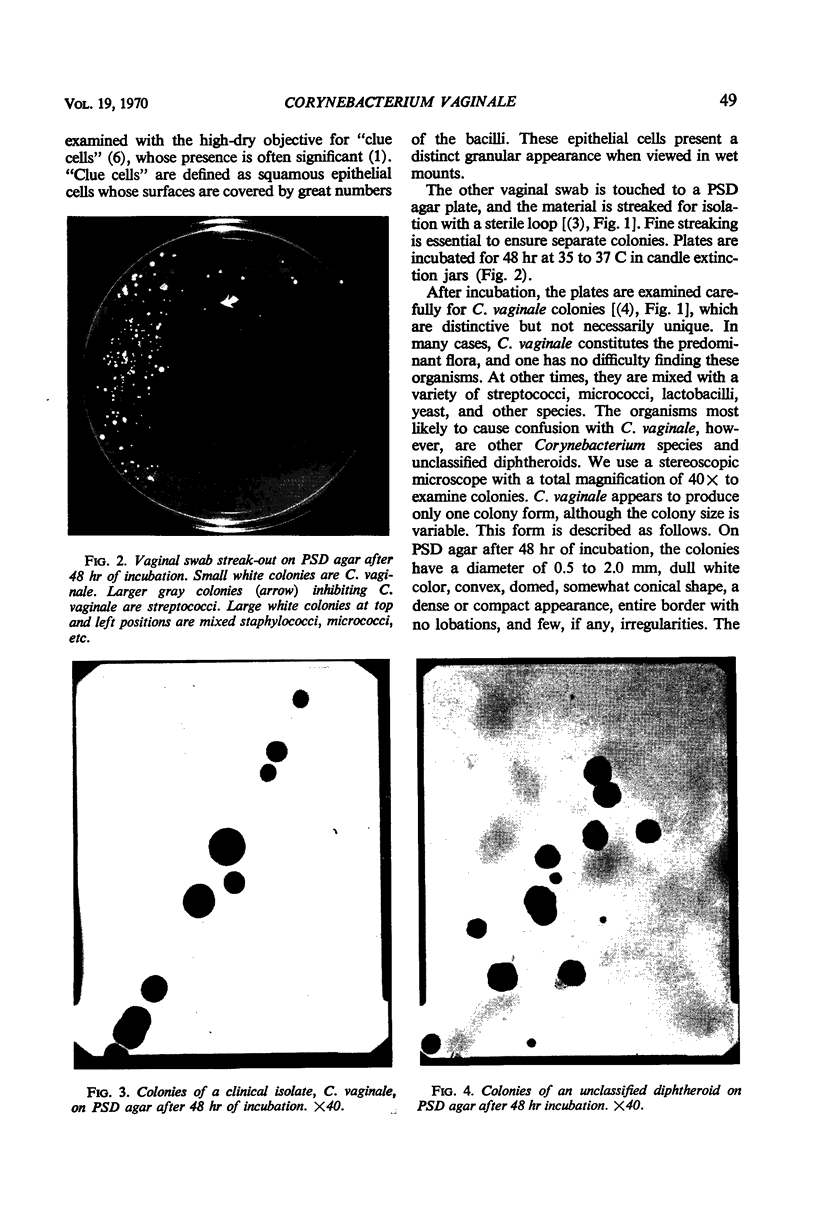
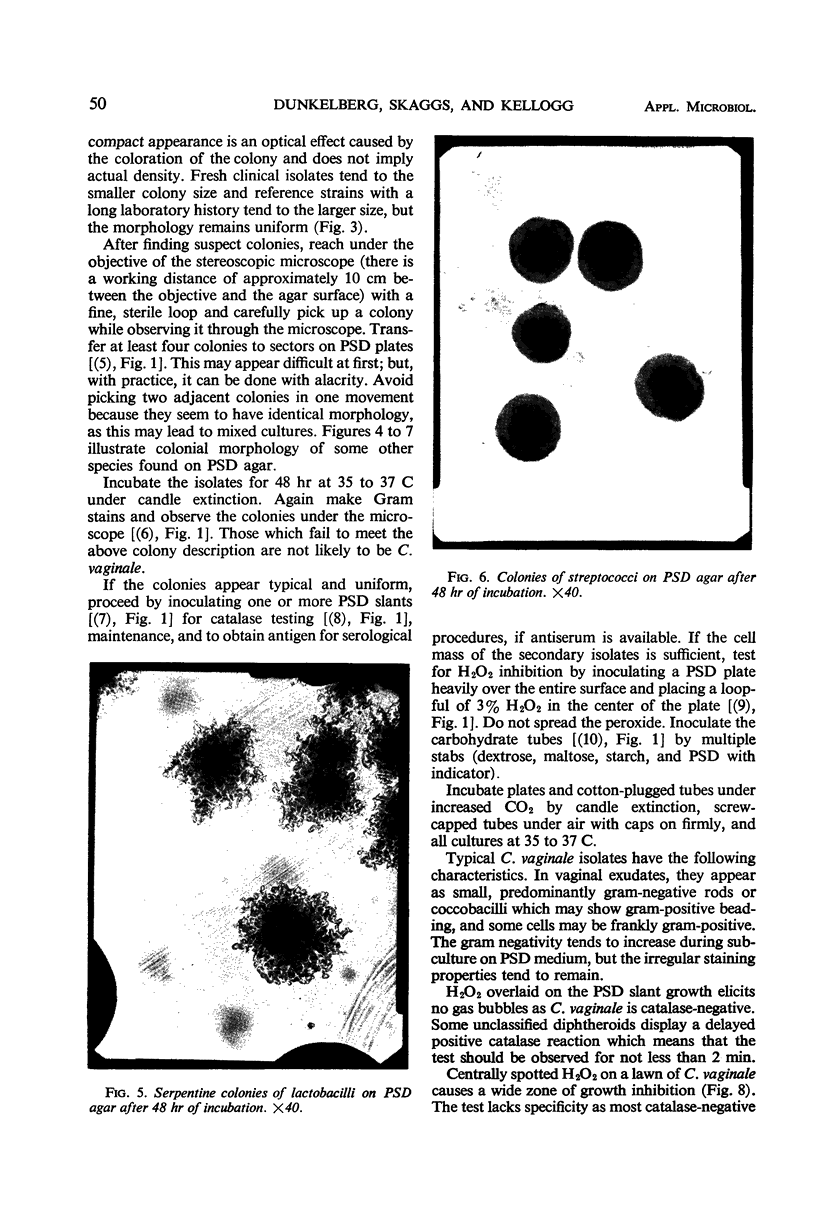
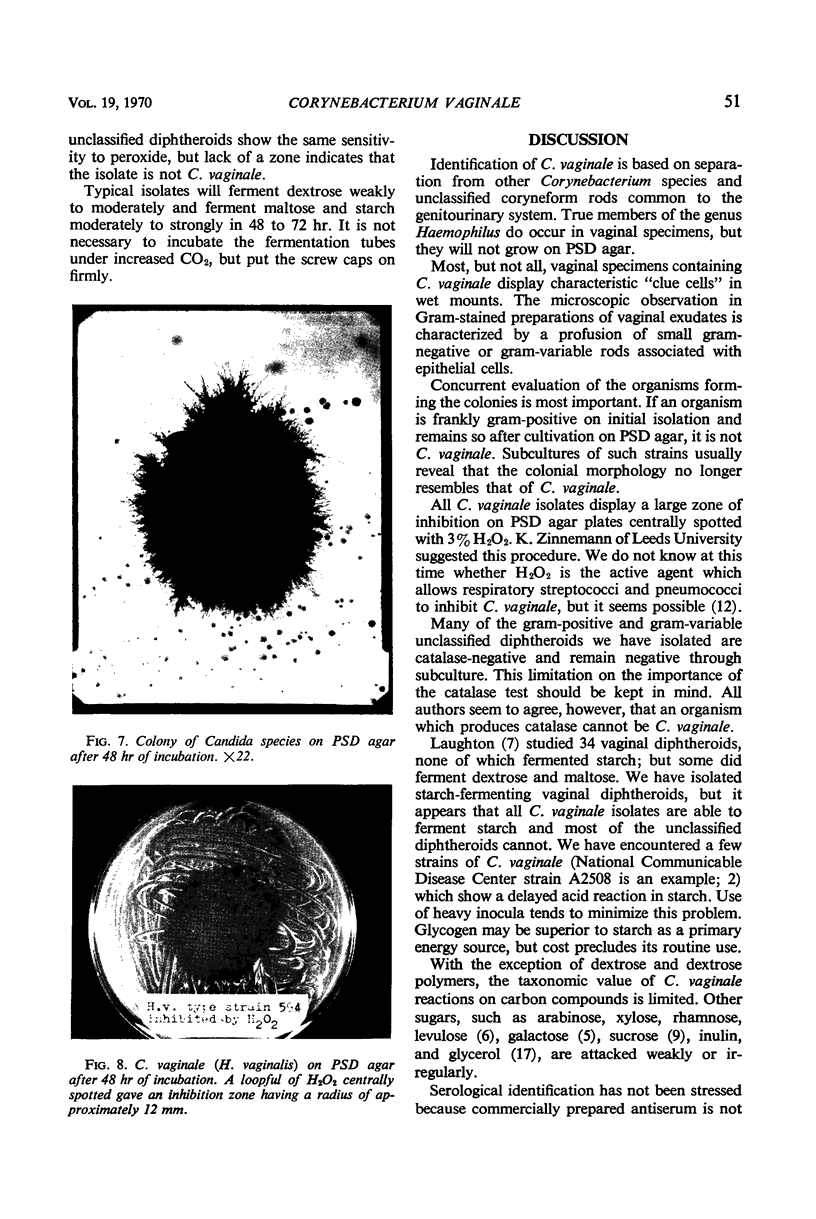

Images in this article
Selected References
These references are in PubMed. This may not be the complete list of references from this article.
- DUNKELBERG W. E., Jr DIAGNOSIS OF HEMOPHILUS VAGINALIS VAGINITIS BY GRAM-STAINED SMEARS. Am J Obstet Gynecol. 1965 Apr 1;91:998–1000. doi: 10.1016/0002-9378(65)90569-7. [DOI] [PubMed] [Google Scholar]
- DUNKELBERG W. E., Jr, WOOLVIN S. C. HAEMOPHILUS VAGINALIS RELATIVE TO GONORRHEA AND MALE URETHRITIS. Mil Med. 1963 Nov;128:1098–1101. [PubMed] [Google Scholar]
- Dunkelberg W. E., Jr, McVeigh I. Growth requirements of Haemophilus vaginalis. Antonie Van Leeuwenhoek. 1969;35(2):129–145. doi: 10.1007/BF02219124. [DOI] [PubMed] [Google Scholar]
- EDMUNDS P. N. Haemophilus vaginalis. Its association with puerperal pyrexia and leucorrhoea. J Obstet Gynaecol Br Emp. 1959 Dec;66:917–926. doi: 10.1111/j.1471-0528.1959.tb01962.x. [DOI] [PubMed] [Google Scholar]
- EDMUNDS P. N. The biochemical, serological and haemagglutinating reactions of "Haemophilus vaginalis". J Pathol Bacteriol. 1962 Apr;83:411–422. doi: 10.1002/path.1700830211. [DOI] [PubMed] [Google Scholar]
- GARDNER H. L., DUKES C. D. Haemophilus vaginalis vaginitis: a newly defined specific infection previously classified non-specific vaginitis. Am J Obstet Gynecol. 1955 May;69(5):962–976. [PubMed] [Google Scholar]
- LEOPOLD S. Heretofore undescribed organism isolated from the genitourinary system. U S Armed Forces Med J. 1953 Feb;4(2):263–266. [PubMed] [Google Scholar]
- LUTZ A., GROOTTEN O., WURCH T. Etude des caractères culturaux et biochimiques de bacilles du type Hemophilus hemolyticus vaginalis; leur sensibilité aux antibiotiques. Rev Immunol Ther Antimicrob. 1956 Apr-Jun;20(3):132–138. [PubMed] [Google Scholar]
- McFadyen I. R., Eykyn S. J. Suprapubic aspiration of urine in pregnancy. Lancet. 1968 May 25;1(7552):1112–1114. doi: 10.1016/s0140-6736(68)90185-2. [DOI] [PubMed] [Google Scholar]
- Mehta U. S., Rana V. S., Vaishnav V. P. A bacteriological study of acute urethritis. Indian J Pathol Bacteriol. 1967 Apr;10(2):170–176. [PubMed] [Google Scholar]
- Pease P., Laughton N. The antigenic structure of Haemophilus and Corynebacterium species from the human genital tract claimed to be associated with or derived from Mycoplasma hominis. J Gen Microbiol. 1965 Dec;41(3):293–297. doi: 10.1099/00221287-41-3-293. [DOI] [PubMed] [Google Scholar]
- REDMOND D. L., KOTCHER E. CULTURAL AND SEROLOGICAL STUDIES ON HAEMOPHILUS VAGINALIS. J Gen Microbiol. 1963 Oct;33:77–87. doi: 10.1099/00221287-33-1-77. [DOI] [PubMed] [Google Scholar]
- Rotheram E. B., Jr, Schick S. F. Nonclostridial anaerobic bacteria in septic abortion. Am J Med. 1969 Jan;46(1):80–89. doi: 10.1016/0002-9343(69)90060-6. [DOI] [PubMed] [Google Scholar]





